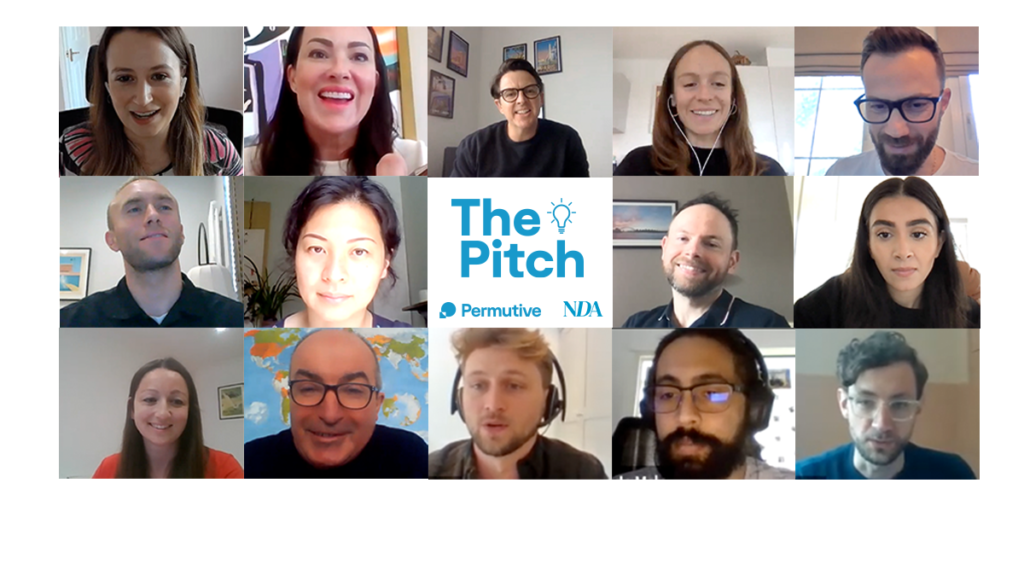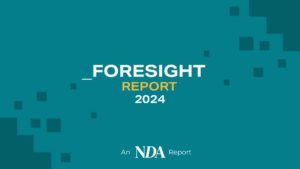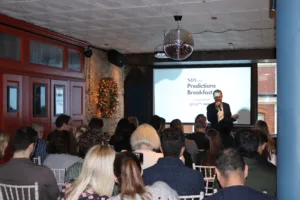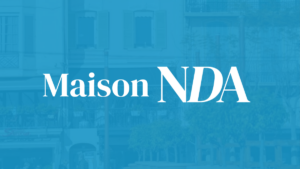In a world without third-party cookies, publishers will be the guardians of data on the open web via privacy-safe first-party audiences. That’s the theory, so we launched a contest for publishers to prove it.
New Digital Age recently partnered with audience platform Permutive to host ‘The Pitch’, a Dragons’ Den-style event that allows publishers to pitch their first-party data solution to a panel of agencies (you can read their views here). The event saw representatives from the Choueiri Group, Dazed Media, The Guardian, and Hello! present to “Dragons” at Starcom, Carat, Mindshare, and Havas.
“It feels like everyone is trying to work on quick sand at the moment, with a different announcement coming out every week,,” said Elizabeth Brennan, Head of Advertiser Strategy at Permutive. “Publishers and advertisers need to build closer relationships to shield against all the changes that are being made in the ecosystem. During The Pitch, it became evident that as more publishers build their first-party data offering and present brands with an option that’s already available to them, it adds a level of control over their own destiny, which is lacking at the moment.” Choueiri Group’s first-party data increased CTR by 85%
The first to pitch was Digital Media Services (DMS), the digital arm of Choueiri Group. Choueiri Group is the leading media representation group in the Middle East with more than 40 web portals to its name. The group boasts 120 million unique browsers per month in MENA, representing 60% of the audience in the region and generating one billion page views between them. These audiences average five sessions and nine page views per month.
Data segments are created using all available data points from across its 40-plus websites.
DMS also uses Choueiri Group’s consumer research studies to create relevant and optimised audiences pre-activation before transferring these findings into the Permutive platform. Using this ‘zero-party’ data enables DMS to create ‘declared audience segments’ by bridging the gap between this data and its stored first-party data.
An example of the company’s work in action came when it worked with a telco brand in Iraq to drive awareness of 4G in the nation. This campaign increased clickthrough rate (CTR) by 85%, brand awareness by 12%, and ad recall by 38%. And, on the back of the campaign, the brand now has bespoke audiences that can be tapped into for future
DMS also worked with a telco brand in Saudi Arabia to drive lower cost per order and increase market share. Here, it achieved the highest lead quality and highest engagement rate across all suppliers, according to the client. Cost-per-lead was reduced from $144 to $41, CTR improved week-over-week by 20%, ad awareness was up 52%, consideration increased 28%, and brand favourability rose 5%.
Dazed marries data and creativity
Second to face the Dragons was Dazed Media, a millennial and gen Z-focused publisher covering popular culture. It has worked on campaigns with the likes of Nike, Burberry, Tinder, Adidas, Ford, Gucci, and Channel 4, to name a few.
Dazed sees itself as being able to offer a unique audience to advertisers and positions itself as being able to marry creativity and data for engagement. Via technology it can now execute efficient and effective first-party data targeting as part of all of its campaigns.
The publisher’s data is powered by content and audience analysis; an annual deep dive report into gen Z through a survey of over 3,000 people, expert interviews, and desk research; and bespoke research on specific topics within its Dazed Studio, which sits at the heart of its global publisher ecosystem. Through these avenues, it has increased its first-party data by 63% year-on-year.
Last year, Dazed launched a series of films with Gucci as part of their annual partnership. The project, entitled ‘Absolute Beginners,’ saw nine established creatives in film, fashion, and music display their creativity in a different way by writing and directing their own short screenplay for the first time. The concept was driven by findings from the annual 2020 Youth report where they learnt that authenticity & purpose are the biggest drivers in Gen-Z’s attitude towards brands. The deep personal investment by talent ensured content was highly engaging to their audience bringing positive sentiment to the brand.
The onsite activation was also informed by in-depth analysis and learnings from 2019’s partnership in which content dwell time was maximised by an expertly curated user journey taking readers through each talent’s content in a journey of discovery. The campaign outperformed across all benchmarks in the first two weeks achieving amongst their highest page views for an article within 24 hours of publication and 98% higher page views than average after one week. The campaign delivered overall 12 million impressions.
The Guardian delivers meaningful reach
The Guardian, which is celebrating its 200th anniversary this year, was next to step up to the plate. The publishing giant reaches 4.8 million daily and 13.5 million weekly in the UK, while also boasting 1.5 million subscribers, members, and individual contributors who help to fund its journalism in 140 countries.
The Guardian sees itself as more than just a newsbrand, viewing itself as being at the forefront of culture and believing that it delivers ‘meaningful’ reach to advertisers because of this.
It uses first-party cookies – giving it 100% visibility of its audience – and proprietary tools to leverage the best possible insights. And uses edge technology to create segments within ‘purchase’, ‘interest’, and ‘intent’.
The newsbrand also benefits from its Guardian Pulse tool, which enables it to see what content is being read in real-time. The tool identifies surging content then overlays it with first-party audience data, presenting the opportunity to react quickly to current and trending news or stories and then target readers based on that.
When measuring ad effectiveness on its platform, the Guardian found that its first-party data had an average brand lift of 65%. It also ranked 39% higher on preference and intent metrics, while campaigns that ran over half of impressions in ‘hard news environments’ delivered 22% average brand uplift.
A campaign with Rimadesio saw the Guardian create a bespoke first-party audience group that was focused around art & design, homes, interiors, and architecture and interested in luxury and furniture. This campaign delivered 600,000 impressions, had a 74% viewability rate, saw brand consideration increase by 102%, and intent rise by 79%.
A second campaign with a smart speaker brand, where two ‘first impression’ takeovers were run on The Guardian website and split into ‘highly engaged’ users versus the rest. This delivered eight million impressions, had 75% viewability, and saw a 15% awareness uplift in engaged audiences.
Greetings
The final pitch of the event came from Hello!, read by one-in-three women in the UK and boasts a UK reach of 38 million across all its touchpoints. This breaks down into 14 million monthly unique UK users. Globally, it has 40 million unique monthly users, a social reach of 15 million, and eight million monthly users on Apple News.
All-in-all, it has seen digital reach increase 20% year-on-year, partnership revenue grow by 25%, and programmatic revenue jump by 40%.
Hello! collects its data using a combination of IBM Watson, polls, and ecommerce triggers. This first-party data can be used for interest, contextual, and social targeting. And its off-the-shelf and bespoke audience segments can be activated against display, video, and paid media.
Hello! activated the ‘Hello! Loves’ bespoke display format in the form of a mobile video display unit as a brand awareness response for Japanese beauty brand, Hada Labo Tokyo. And it was able to increase view through rate by 30% and CTR by 535%.
On the back of this, the publisher launched an internal project called ‘Project Drumbeat’ to see if the power of its data can actually improve awareness and consideration.
It did this by pushing first-party data segments into social platforms, then split testing this data versus non-targeted paid media ads using the same creative. Audiences were then retargeted with a brand awareness poll on social. Here, first-party data targeting increased brand awareness by over 15%.
Hello! also carried out a similar test on display, finding that brand awareness increased by over 50%.
The ‘dragons’ verdict was that the contestants proved the promise of their first-party data as a potential new gold standard for audience data. During The Pitch the publishers were able to use first-party data to understand their audiences, use these insights to better answer brand RFPs, and achieve some amazing results.
*Permutive is a client of Bluestripe Communications, owned by Bluestripe Group, the owner for NDA.









